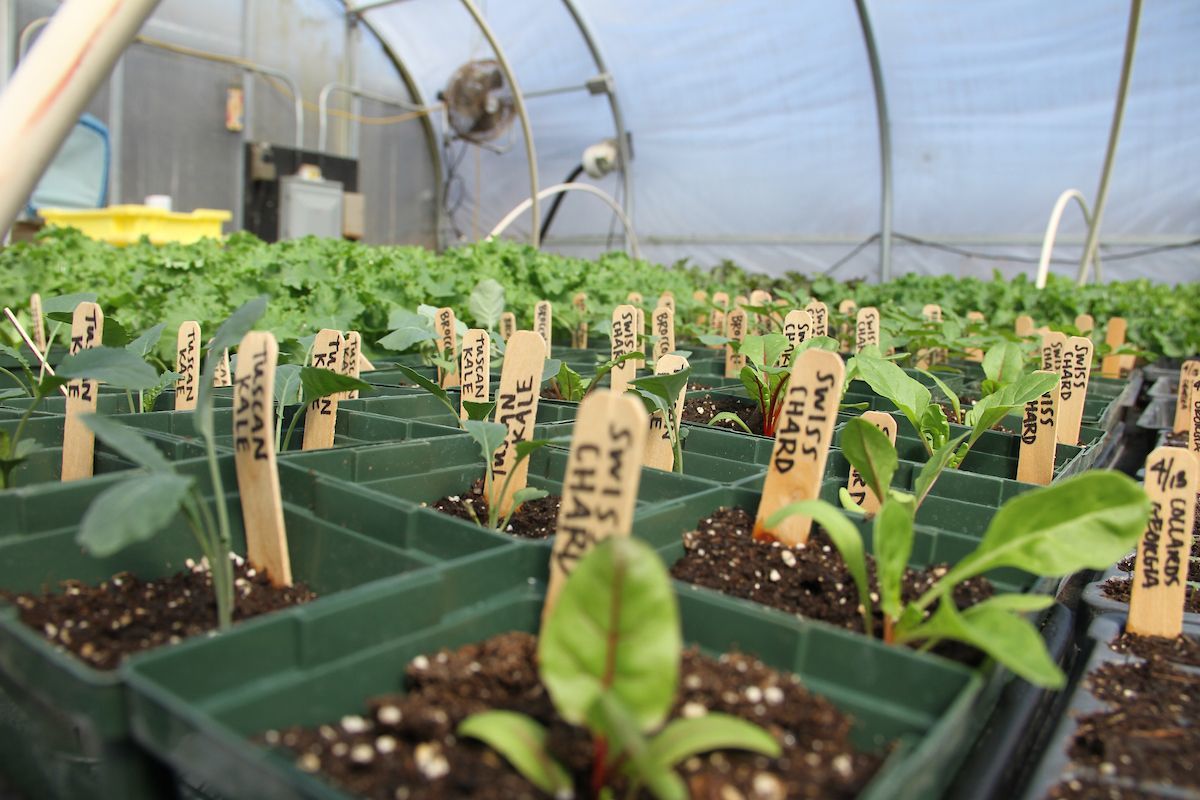
Last summer, alongside fellow Community Crew member Mari and Matthew, Glynwood’s Agriculture Project Manager, I marveled at the thriving roots of two-week-old Willow cutting plants. This was the first step in propagating native plants for Glynwood's Climate-Smart Restoration Project - a transformative initiative that embraces ecological restoration methods for Glywnood’s working lands. Guided by recommendations from a recent biological survey, Glynwood is committed to establishing a visible and accessible public demonstration of regenerative, climate-smart ecological restoration.
The focal point of this project is the restoration of a multiflora (Rosa multiflora) thicket, a dense and invasive plant-dominated area on the farm. By transitioning this thicket into a thriving ecosystem of native species, we aim to enhance our farm's climate resilience and bolster carbon sequestration while delivering multiple benefits. These include increased landscape biodiversity, improved surface water management, diversification of our crop mix through perennial foods and native forages, and the creation of livestock shelter areas to withstand extreme weather events.
The decision to restore the multiflora thicket to native species is not just an ecological endeavor; it plays a crucial role in climate resilience and carbon sequestration. Invasive plant-dominated areas like the multiflora thicket often disrupt natural ecological processes, leading to decreased biodiversity and reduced carbon storage capacity. Native plants, on the other hand, have evolved in harmony with the local environment over millennia, making them resilient and adept at capturing and storing carbon.
Through ecological restoration, we aim to create a balanced and diverse ecosystem that can better withstand the impacts of climate change. Native plants provide crucial habitat and food sources for a variety of wildlife, contributing to a healthier and more vibrant landscape. As these plants grow and flourish, they sequester carbon from the atmosphere, helping to mitigate the effects of greenhouse gasses on our planet.
To achieve these goals, we rely on the efforts of a compensated 'community crew' and dedicated volunteers. We strongly believe in the power of collective learning, and by actively involving the community, we offer invaluable hands-on experiences in ecological restoration. Our team, together with the community, has worked diligently to collect and propagate native plant species found on-site, remove invasive plants, and construct water management structures using locally available materials and hand tools.
We used stem cuttings to propagate local tree species such as Black Alder, Speckled Alder, Elderberry, Willow, and Black Chokeberry. Cuttings measuring 6 to 8 inches in length are obtained, and the lower half is stripped of leaves. Subsequently, rooting hormone treatment facilitates the development of robust roots. These well-adapted plants grow roots in sand over two weeks, and then are transplanted into healthy, moist soil. We also began the cultivation of naturalized grasses, including Little Bluestem, Big Bluestem, and Indian grass, within over 250 peat containers, a significant step towards augmenting the ecological vitality of our landscape.
We intend to communicate our findings and learnings tailored to diverse audiences, including farmers, agricultural technical assistance specialists, and the general public. Through our website, social media outlets, and in-person convenings, we aim to inspire and educate others about the benefits of regenerative ecological practices.
Our collaborative efforts, driven by the passion of our community crew and volunteers, embody a shared commitment to learning and growing together.
This work is funded by Partners for Climate Action Hudson Valley (PCA).

